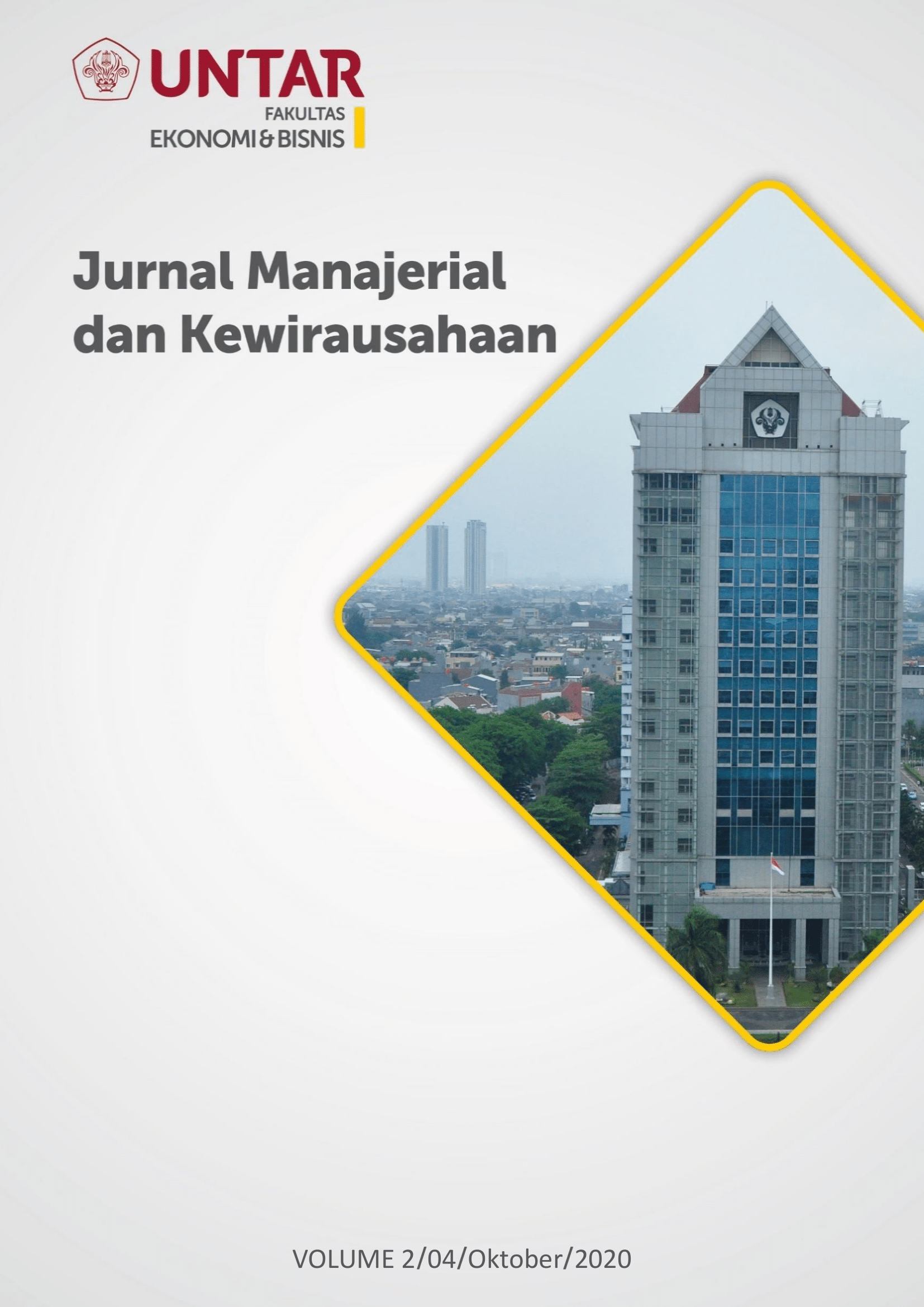Pengaruh Estetika pada Minat Konsumen Terhadap Pembelian Smartphone Xiaomi di Jakarta Barat
Main Article Content
Abstract
This study aims to determine the effect of aesthetics on purchase intention mediated by functional value, social value, and emotional value. The population of this study was consumers who use Xiaomi smartphones. The sampling technique was by using non-probability sampling method. The method of analysis was by using PLS-SEM. The results showed that aesthetics had a positive and significant effect on consumer purchase intentions mediated by functional value, and aesthetics had a positive effect on consumer purchase intentions through emotional value mediation in West Jakarta.
Penelitian ini bertujuan untuk mengetahui pengaruh estetika terhadap minat pembelian yang dimediasi oleh nilai fungsional, nilai sosial, dan nilai emosional. Populasi penelitian ini adalah konsumen yang menggunakan smartphone Xiaomi. Teknik pengambilan sampel menggunakan metode non-probability sampling. Metode analisis menggunakan PLS-SEM. Hasil penelitian menunjukkan bahwa estetika memiliki pengaruh positif dan signifikan terhadap niat pembelian konsumen yang dimediasi oleh nilai fungsional, dan estetika memiliki efek positif pada niat pembelian konsumen melalui mediasi nilai emosional di Jakarta Barat.
Article Details
This work is licensed under a Jurnal Muara Ilmu Ekonomi dan Bisnis Creative Commons Attribution-ShareAlike 4.0 International License.,/p>
References
Bloch, P. T., Brunel, F. F., & Arnold, T. J. (2003). Individual differences in the centrality of visual product aesthetics: Concept and measurement. Journal of Consumer Research, 29, 551-565.
Henseler, J., Ringle, C. M., & Sinkovics, R. R. (2009). The use of partial least squares path modeling in international marketing. Advances in International Marketing, 20 (1), 277-319.
Kotler, P., & Keller, K. L. (2012). Marketing Management. England: Pearson Education Limited.
Lu, L., Chang, W., & Chang, H. (2014). Consumer attitudes toward blogger’s sponsored recommendations and purchase intention: The effect of sponsorship type, product type, and brand awareness. Computers in Human Behavior, 34, 258–266.
Rintamaki, T., Kanto, A., Kuusela, H. & Spence, M. T. (2006), Decomposing the value of department store shopping into utilitarian, hedonic and social dimensions: evidence from Finland. International Journal of Retail & Distribution Management, 34 (1), 6-24.
Sanchez, J., Callarisa, L. L. J., Rodríguez, R. M., & Moliner, M. A. (2006). Perceived value of the purchase of a tourism product. Tourism Management, 27 (4), 394-409.
Sheth, J. N., Newman, B. I., & Gross, B. L. (1991). Why we buy what we buy: A theory of consumption values. Journal of business research, 22 (2), 159-170.
Sugiyono. (2015). Metode Penelitian Kuantitatif, Kualitatif Dan Kombinasi (Mixed Methods). Bandung; ALFABETA.
Sweeney, J. C., & Soutar, G. N. (2001). Consumer perceived value: The development of a multiple item scale. Journal of Retailing, 77 (2), 203–220.
Wang, Y., Cruthirds, K., Axinn, C. & Guo, C. (2013), In search of aesthetics in consumer marketing: an examination of aesthetic stimuli from the philosophy of art and the psychology of art. Academy of Marketing Studies Journal, 17 (2), 37-55.
Williams, B. K. & Sawyer, S. C. (2011). Using Information Technology: A Practical Introduction to Computers & Communications. New York: McGraw-Hill.
Workman, J. E. & Caldwell, L. F. (2007). Centrality of visual product aesthetics, tactile and uniqueness needs of fashion consumers. International Journal of Consumer Studies, 31, 589–596.



